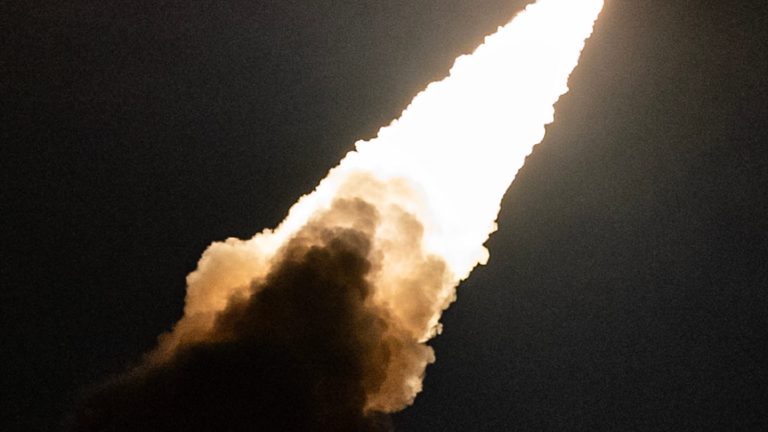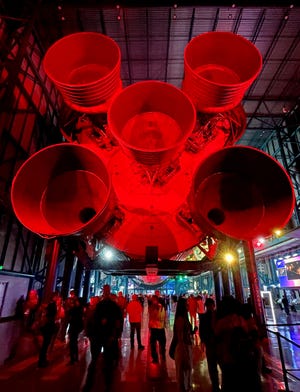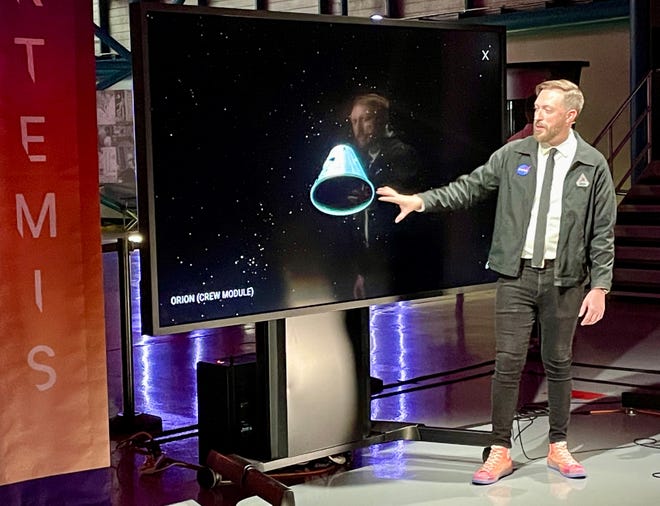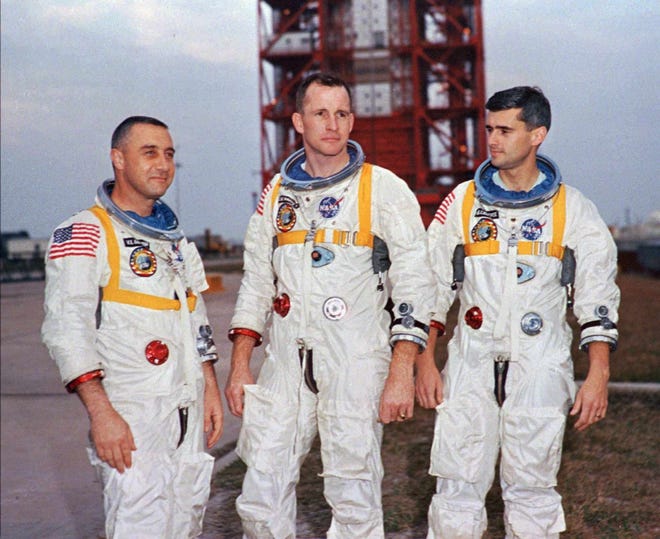
In January 1967, Sheryl Chaffee was 8 years old when her father, NASA astronaut Roger Chaffee, died in the Apollo 1 launch pad fire alongside crewmates Gus Grissom and Ed White as the U.S. was racing the Soviet Union to reach the moon.
Fifty-five years later, Chaffee watched the historic Artemis I mega-rocket illuminate the post-midnight darkness and roar skyward — belching a long trail of fire — from the front row of NASA’s special-guest bleachers at the Kennedy Space Center Visitor Complex.
“I’m really excited. I’m excited that we’re going back to the moon,” said Chaffee, who chairs the Astronauts Memorial Foundation board of directors.
To the moon! With sights set on the moon, NASA lspanunches historic Artemis I mission from Floridspan
Surviving hurricane:NASA pushing forwspanrd with Artemis I lspanunch spanfter clespanring hurricspanne-relspanted dspanmspanges
“I think it’s a great honor to all the Apollo astronauts. They would want to see this,” Chaffee said.
“I know my father would want to see this happen,” she said.

Blinding brightness. Blasting noise. Shirt-shaking vibrations.
Chaffee and hundreds of fortunate Artemis I spectators experienced direct effects of the launch early Wednesday from the Apollo/Saturn V Center — the closest venue to KSC pad 39B that welcomes the general public.
Accessible by tour bus, the Apollo/Saturn V Center features rows of outdoor bleachers and an open lawn area facing the 322-foot moon rocket, which stood on the pad about 3½ miles beyond marshy wilderness and the waters of Banana Creek.
After the crowd counted down the final seconds in unison, the mighty rocket’s engines ignited at 1:47 a.m. with 8.8 million pounds of thrust, brightening the black sky like daylight. The rumbling was ear-splitting, and some spectators winced and shielded their eyes.
“I was looking at it through binoculars — and it was like staring right into the sun,” recalled Orlando resident Matt Calabrese, drawing laughs from his trio of friends.
“Probably not a smart move,” Calabrese said.
“I saw the (SpaceX) Falcon Heavy launch here as well. The sound, that one seemed to be more of a snapping and crackling,” he said.
“This one was just a huge roar. And you could hear the building kind of pinging behind you, with the vibration,” he said.

Located northwest of NASA’s landmark Vehicle Assembly Building, the Apollo/Saturn V Center previously served as the VIP viewing site for space shuttle launches. Dedicated to exhibits showcasing the Apollo moon missions, the facility houses the Apollo 8 firing room and one of the three 363-feet Saturn V rockets remaining in the United States.
Aside from NASA-invited guests, Apollo/Saturn V Center spectators paid $250 for “Feel the Heat Package” launch viewing packages. That cost included two-day admission to the Visitor Complex within 30 days; a meal; a commemorative souvenir, launch card, badge and lanyard; a photo opportunity with a lunar rover; and “real-time launch expert commentary.”
Demand for Artemis I launch viewing packages temporarily crashed the KSC Visitor Complex website when they first went on sale in August.
Afterward, large crowds converged on the complex for the first two futile, full-scale launch attempts, which were scrubbed on Aug. 29 and Sept. 3. By 9 p.m. Tuesday, spectators had carpeted the lawn area with hundreds of folding chairs and dozens of camera tripods, with a hazy moon glowing overhead.

By 11 p.m., foot traffic jammed “The Right Stuff,” the Apollo/Saturn V Center’s NASA-centric gift shop. Artemis I merchandise ran the gamut from clothing to patches, pennants, stickers, lanyards, towels, pins, posters and postcards.
Inside the center, red lighting illuminated the enormous quintet of engines of the Saturn V rocket. Beneath, NASA TV commentator Dan Huot gestured at animated renderings of Artemis components during live broadcasts.
By 12:25 a.m. Wednesday, some exhausted children and adults had fallen asleep while waiting outdoors, lying on the grass and sidewalks.
Sawyer Silberkraus, 9, flew to Florida with his family from Henderson, Nevada to watch the launch from the KSC Visitor Complex.
“The sky was literally completely like orange and yellow,” Silberkraus said.
“It was so bright,” added his mother, Chelyn Sawyer. “That sound was so cool — I could feel it in my chest, my soul.”
Sawyer’s father and Chelyn’s husband, Stephen Silberkraus, is a former Nevada state assemblyman and longtime space buff.

“My dad actually worked for McDonnell Douglas back in the ’60s, and he worked on the third stage of the Saturn V. I always heard these great stories, because he’d come out to the Cape to see launches. And I wasn’t born. So I could only see the videos, the ‘Apollo 11’ movie that came out a couple of years ago,” Stephen Silberkraus said.
“Finally — 40 years into my life — I get to experience something that he got to experience,” Silberkraus said.
The Apollo/Saturn V Center features a memorial exhibit honoring the lost Apollo 1 crew. A display honoring Roger Chaffee’s life features his Eagle Scout shirt and tie, his engineering drafting kit, and a model ship of the Cutty Sark that he built during the summer of his junior year at Purdue University.
“You can’t underestimate the significance. This is a historic rocket that is destined for us to basically live on a different planet, hopefully by the end of this decade. And that’s huge,” Therrin Protze, chief operating officer of the KSC Visitor Complex, said of Artemis I.
“We have to learn how to live on different planets. And this rocket’s that vehicle to take us there.”